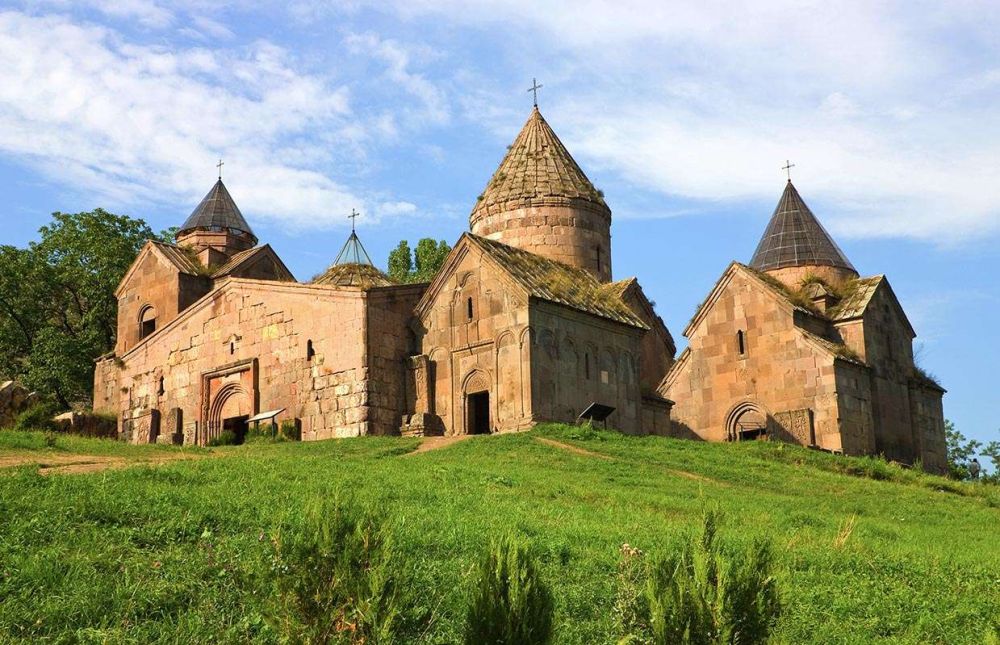

Nestled amidst the verdant forests and mountains of the Tavush region, the Goshavank Monastery stands as a serene testament to Armenia's rich medieval history and architectural heritage. Founded in the 12th century by the prominent Armenian scholar Mkhitar Gosh, the monastery was originally called Nor Getik. It served not only as a religious site but also as a renowned educational center of the time.
Goshavank Monastery became a pivotal site for the Armenian Apostolic Church, attracting monks and scholars alike. The name Goshavank, which translates to "Monastery of Gosh," was attributed to the monastery after the death of Mkhitar Gosh, acknowledging his profound influence. Housing impressive khachkars (stone-crosses), intricate carvings, and manuscripts, the monastery exemplifies the mastery of medieval Armenian stonemasonry and craftsmanship.
Although Armenia holds a long history of monastic life, the tourism industry surrounding these historical sites has blossomed notably in the 20th century. Goshavank Monastery began attracting visitors not only for its spiritual importance but also for its surrounding natural beauty. In the years following Armenia's independence from the Soviet Union in 1991, national efforts promoted the country's historical and cultural sites, leading to increased international awareness and tourism.
Recently, ecotourism has gained momentum, with visitors seeking to combine their cultural explorations with the natural splendor that regions like Dilijan offer. The inclusion of Dilijan National Park and surrounding sites like Goshavank Monastery in travel itineraries has enhanced their appeal. Tourists engage in hiking, bird watching, and other outdoor activities, all while taking in the historical context of the monastery.
Furthermore, sustainable tourism initiatives have been on the rise, with local entrepreneurs offering services that focus on cultural preservation and environmental responsibility. Traditional guesthouses, local guided tours, and artisan workshops contribute to an authentic visitor experience that supports the local economy.
Today, visitors to Goshavank Monastery can witness ongoing preservation work, ensuring that the site maintains its historical integrity and beauty. As travel trends lean towards more conscious and meaningful experiences, Goshavank offers a unique blend of spiritual enlightenment, natural beauty, and a deep dive into the history of Armenia's monastic traditions. The monastery continues to be an essential stop for any visitor interested in the rich tapestry of Armenian culture and history.